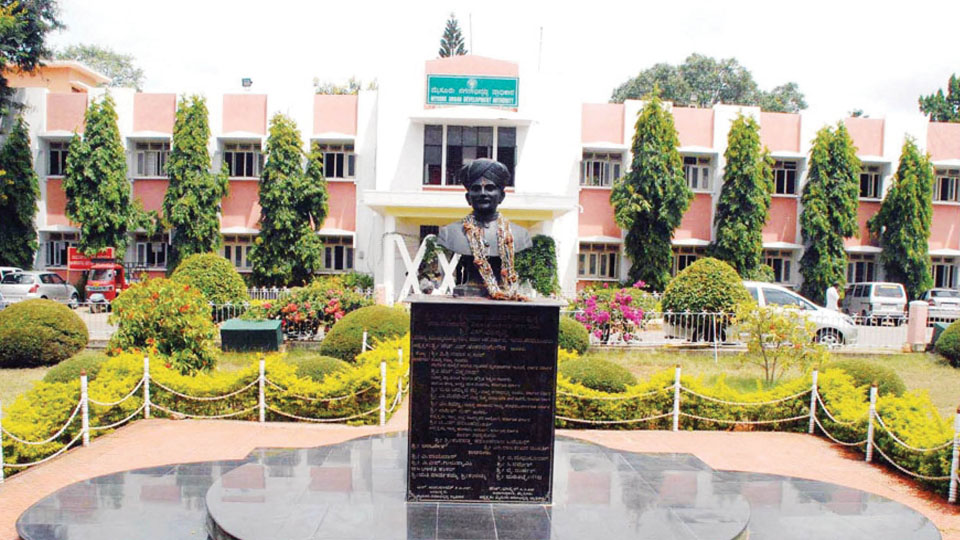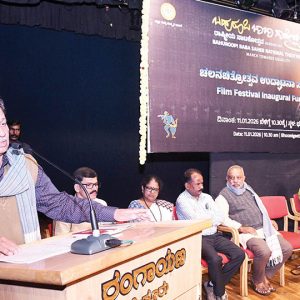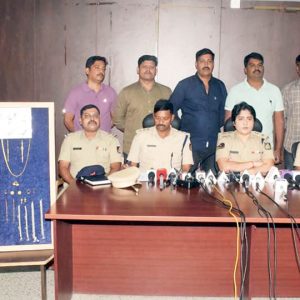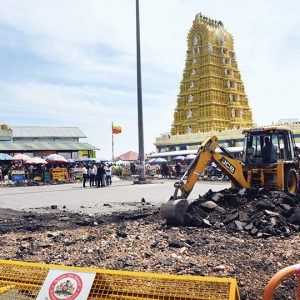- In 35 years, MUDA allotted 44,011 sites
- CITB formed 54 new layouts in 19 years
- MUDA could form only 16 layouts in 35 years!
Mysore/Mysuru: The erstwhile City Improvement Trust Board (CITB) — now being formally known as Mysuru Urban Development Authority (MUDA) — had significantly improved the standard of living in Mysuru by creating many well-planned layouts and providing housing to the needy people.
Now in contrast, the MUDA is facing criticism for neglecting its primary duties of developing layouts and distributing house sites to eligible residents. Unfortunately, over 86,000 site aspirants are still awaiting for their turn to possess one. At present, the MUDA affairs have come under severe public scrutiny following allegations of corruption, favouritism and illegal land deals.
The CITB, established by Nalwadi Krishnaraja Wadiyar in 1904, undertook various housing and welfare schemes and created well-planned layouts across Mysuru city. Nalwadi initially formed a six-member ‘local committee’ under the Chairmanship of the Maharaja’s Secretary to prepare plans for the comprehensive development of Mysuru city.
The ‘local committee’ visited several areas and submitted a comprehensive report on city’s overall development to the ‘development committee’ formed by the Maharaja.
The Maharaja had formed a ‘development committee’ in September 1902, consisting of 10 members under the Chairmanship of the Chief Engineer to control the deadly plague epidemic that emerged in 1898.
The plans included modifying roads and constructing new ones, drainage systems, public toilets and affordable housing for poor and working-class people. Nalwadi drew inspiration from the Bombay City Improvement Act and established the Mysore City Development Regulation on Dec. 1, 1903.
Later, on Jan. 1, 1904, the Maharaja transformed this into Mysore City Improvement Trust Board, recognised as first-of-its-kind not only in the State but also in the country. In 1988, CITB was renamed Mysore Urban Development Authority (MUDA).
CITB forms 54 layouts
Following the aims and objectives laid by the Maharaja, CITB formed 54 layouts from 1967 to 1986 including Jayalakshmipuram, Vidyaranyapuram, V.V. Mohalla, Yadavagiri, Vontikoppal, Metagalli, Brindavan Layout, four Stages of Gokulam, Saraswathipuram, Jayanagar, Dattagalli, Hebbal, Srirampura, Kyathamaranahalli, Kuvempunagar, Gayathripuram, N.R. Mohalla, Mandi Mohalla, Lashkar Mohalla, Bannimantap A, B and C, J.P. Nagar, Gangothri First and Second Stage, Alanahalli, Jalapuri and Shankar Mutt.
From 1967-68 to 1986, over 19 years, the CITB also formed and distributed 6,434 sites in 23 layouts. However, from 1989 to 2024, over 35 years, MUDA formed only 16 layouts and distributed 44,011 sites in 40 layouts including those formed by the CITB. Combined, CITB and MUDA have distributed 50,445 sites across 63 layouts to date.
Income-based homes
Under the Own Your Housing Scheme, CITB distributed 10,000 houses to various sections of society. These houses were categorised for different income groups, including HIG (High-Income Groups), MIG (Middle-Income Groups) and LIG (Low-Income Groups).
These houses were constructed in Kuvempunagar, Aravindnagar, Vivekanandanagar, Sharadadevinagar, Vijayanagar (First, Second and Third Stages), Alanahalli, Devanur (First Stage), Kyathamaranahalli and Bademakan. The CITB, with financial assistance from the Housing and Urban Development Corporation (HUDCO), New Delhi, constructed and allocated over 8,000 houses in various settlements for different categories.
The year 1980 was declared by the United Nations (UN) as the Year of the Disabled. To mark this, 202 houses were constructed and allocated in the Bademakan settlement for differently-abled.
CITB also approved Civic Amenity (CA) sites for charitable trusts to construct hospitals, educational institutions, community halls, Government office buildings, affordable marriage halls, etc. Zonal drinking water reservoirs were constructed in German Press, Kuvempunagar, and Yadavagiri.
Over 84 years, the CITB has been instrumental in the planned and comprehensive development of the city and has left a significant mark on the city’s overall development.
6,500 houses, 13,500 sites allocated in CITB’s ‘Asha Mandira’ Project of 1987
United Nations declared 1987 as International Year of Shelter. To mark this, CITB designed ‘Asha Mandira’ Project under the Chairmanship of the then CITB Chairman D. Madegowda to distribute 6,500 houses.
However, 35,000 people applied for houses. Later, the project was divided into four segments: ‘Build Your Own House’, ‘HUDCO Scheme’, ‘Own Your House Scheme’ and ‘Bank Assistance Scheme’.
Land was acquired in Dattagalli, Bogadi, Hebbal, Chikkahadanahalli, Srirampura, Devanur, Kyathamaranahalli and Belevatha. Specifically, in Bogadi, Hebbal, Devanur and Kyathamaranahalli, 6,500 houses were built for which HUDCO and the Government provided 85 percent of the total project cost and CITB contributed 15 percent.
In the Build Your Own House Scheme, 13,500 plots were allocated to economically weaker sections. The CITB also provided market facilities for the residents by constructing shopping complexes in Siddarthanagar, Gokulam 3rd Stage and Mahadevapura Agrahara.
Sites allotted by MUDA from 1989 to 2017
| Year | Area | Sites |
| 1989 | Vijayanagar 1st and 2nd Stage, Kyathamaranahalli, Sathagalli Devanur, Dattagalli | 1,600 |
| 1991 | Nachanahalli 1st Stage, Devanur 2nd Stage, Srirampura, Vijayanagar 2nd Stage, Vijayanagar 3rd Stage, Hebbal and Kesare | 2,740 |
| 1994 | Dattagalli 3rd Phase, Vijayanagar 4th Stage 1st Phase, Vijayanagar 4th Stage 2nd and 3rd Phase, Rajivnagar 2nd Stage, Srirampura and Nachanahalli 2nd Stage | 12,044 |
| 1998 | Vijayanagar 4th Stage, Sathagalli 2nd Stage | 5,787 |
| 2000-01 | Hanchya-Sathagalli A and B Zone and Devanur 3rd Stage | 6,990 |
| 2001-02 | Hanchya-Sathagalli A and B Zone and Devanur 3rd Stage | 1,496 |
| 2003 | Nachanahalli Kuppalur 3rd Stage, Devanur 3rd Stage. Sathagalli A and B Zone | 4,304 |
| 2005 | Vasanthnagar | 1,720 |
| 2007 | Lal Bahadur Shastri Nagar, Shanthaveri Gopalagowda Nagar | 3,690 |
| 2011 | Chamalapura (Nanjangud), R.T. Nagar, Lalithadri Nagar (South) | 1,278 in Lalithadri Nagar (South), 61 at Chamalapura, 1,760 at R.T. Nagar |
| 2017 | Lalithadri Nagar (North) | 541 |
| Total | 44,011 |
Note: From 2017, neither MUDA formed any layout nor distributed sites to the common man.








Recent Comments